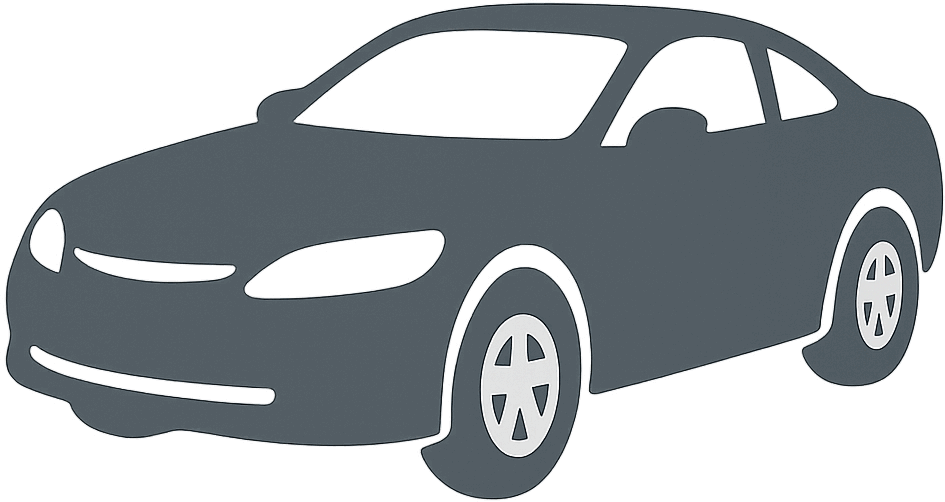 1997 Irmscher Coupe Dimensions, Size & Specs
1997 Irmscher Coupe Dimensions, Size & Specs
The Irmscher Coupe, first introduced in 1997 and still in production today, stands out as a classic example of coupe design reflecting both style and performance. This vehicle embodies the timeless appeal of the coupe segment with its two-door configuration, streamlined body, and sporty aesthetics. While specific size measurements such as length, width, and height vary based on model updates over the years, Irmscher's Coupe maintains proportions that balance dynamic driving experience with everyday usability. Typically, coupes like this range from approximately 4.2 to 4.5 meters (13.8 to 14.8 feet) in length, with widths around 1.7 to 1.8 meters (5.6 to 5.9 feet), offering a compact yet comfortable cabin space. The low height emphasizes a sporty silhouette, generally around 1.3 to 1.4 meters (4.3 to 4.6 feet). Irmscher's engineering focuses not only on sleek appearance but also on optimal weight distribution, enhancing handling and road presence. As a coupe, this model appeals to drivers seeking a combination of style, agility, and driving pleasure without sacrificing practicality. Its continued production beyond two decades speaks to its strong market reputation and adaptability. Whether compared to modern compact coupes or classic designs, the Irmscher Coupe holds a distinctive position with its heritage and ongoing refinement.
Discover the standout features that make the 1997 Irmscher Coupe a leader in its class
Have a question? Please check our knowledgebase first.
The Irmscher Coupe 1997 generation features a compact and sporty design typical of coupes. While exact factory specs can vary due to customizations by Irmscher, the Coupe generally measures approximately 4,250 mm (167.3 inches) in length, 1,730 mm (68.1 inches) in width, and about 1,350 mm (53.1 inches) in height. These dimensions contribute to its agile handling and sporty appearance, making it well-suited for enthusiasts seeking performance in a sleek coupe format.
The Irmscher Coupe 1997 generation typically weighs around 1,300 to 1,400 kg (approximately 2,866 to 3,086 lbs), depending on optional equipment and modifications. This relatively light curb weight allows for improved acceleration, nimble handling, and enhanced fuel efficiency compared to heavier vehicles. Irmscher's performance tuning often balances added power with careful weight management to preserve the coupe’s dynamic driving experience.
As a sporty coupe, the Irmscher Coupe from 1997 prioritizes driver engagement over maximum cargo capacity. Typically, it offers a modest trunk volume of about 300 to 350 liters (10.6 to 12.4 cubic feet), suitable for everyday essentials and small luggage. The rear seats may or may not fold down depending on the specific model and customization, which can slightly enhance cargo versatility.
Yes, the Irmscher Coupe 1997 fits comfortably in a standard residential garage. Given its length of around 4.25 meters (13.94 feet) and width of about 1.73 meters (5.68 feet), it occupies less space than many modern SUVs, making parking and storage convenient. Most standard single-car garages typically have dimensions exceeding 6 meters (20 feet) in length and 3 meters (9.8 feet) in width, providing ample room for the coupe along with additional space for opening doors and maneuvering.
The 1997 Irmscher Coupe maintains a similar size footprint compared to its predecessors, which were often based on small to mid-sized coupes from other manufacturers. However, the 1997 generation features refined styling with slightly more aerodynamic dimensions and potentially improved space efficiency inside the cabin. While the exact predecessor model varies depending on base platform, the 1997 generation generally offers a balanced update in size without significantly increasing exterior dimensions, favoring handling and driver engagement.
Compared to other late 1990s coupes like the BMW 3 Series Coupe (E36) and the Audi Coupe (B4), the Irmscher Coupe 1997 falls within a similar size range. Its length around 4.25 meters (167 inches) and width of 1.73 meters (68 inches) aligns closely with competitors, offering a blend of compact dimensions for sporty handling and enough interior space for comfort. However, the Irmscher’s tuning and design emphasize unique stylistic and performance characteristics distinguishing it within the segment.
The interior of the 1997 Irmscher Coupe prioritizes a driver-focused cockpit and sporty seating. Front legroom typically measures around 1,050 mm (41.3 inches), while front headroom is about 980 mm (38.6 inches), accommodating most drivers comfortably. Rear seating, if present, offers more limited space: rear legroom may be roughly 800 mm (31.5 inches) with headroom around 900 mm (35.4 inches). The coupe layout tends to constrain rear passenger comfort, making it more suitable for occasional seating or additional cargo space.
The Irmscher Coupe from 1997 typically features a ground clearance of approximately 130 mm (5.1 inches), which supports sporty handling by lowering the center of gravity but limits off-road and rough terrain usability. This clearance is adequate for most urban and highway driving conditions, though care should be taken with speed bumps and uneven surfaces to avoid underbody scrapes, especially if the suspension has been lowered for enhanced performance.
Yes, the 1997 Irmscher Coupe is well-suited for daily urban commuting due to its compact size and sporty handling. Its relatively small footprint, with a length of about 4.25 meters (13.94 feet) and width near 1.73 meters (5.68 feet), allows for easier navigation through tight city streets and parking in constrained spaces. The coupe's responsive steering and firm suspension make maneuvering around traffic and obstacles more engaging, though its lower ground clearance may require some caution on uneven city roads.
The 1997 Irmscher Coupe typically has a wheelbase around 2,450 mm (96.5 inches), which strikes a balance between stability at speed and agility in corners. This moderate wheelbase length enhances ride comfort and interior space without compromising nimble handling. The turning radius is generally about 5.4 meters (17.7 feet), allowing relatively tight maneuvering in urban environments and parking lots. These dimensions together contribute to an engaging driving experience with precise control.
